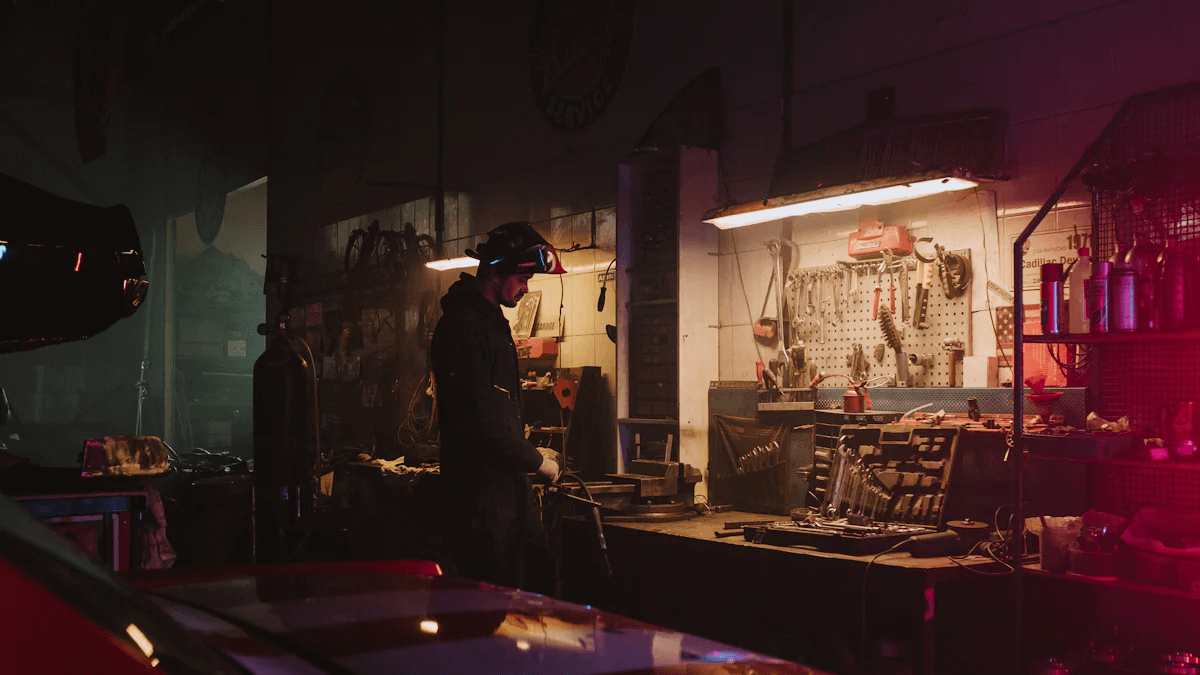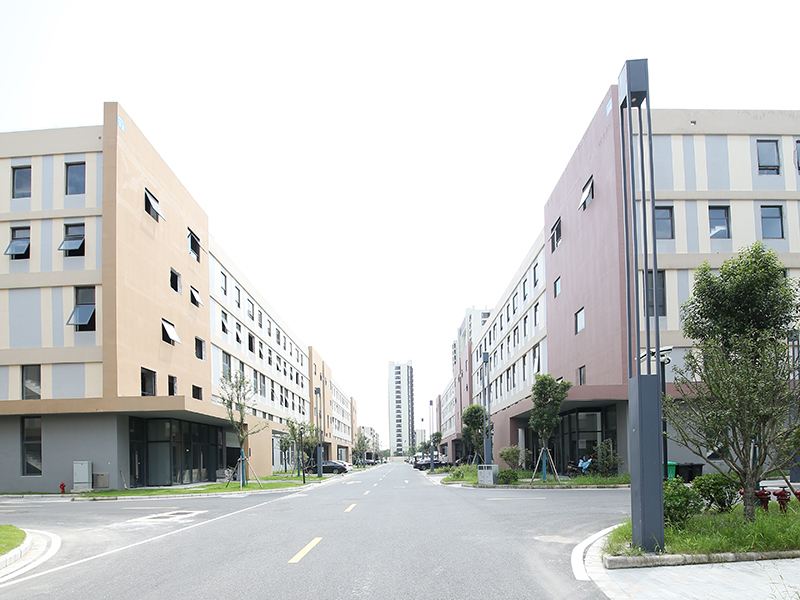
Brushless DC Blower start failures can disrupt your operations. You might encounter issues like corroded windings, which account for 16% of motor failures, or faulty bearings, responsible for a staggering 51%. To tackle these problems, begin by checking the power supply and connections. Addressing these issues promptly ensures smooth operation. Identifying the root cause is crucial for effective resolution. By understanding common failure points, you can take immediate action and prevent future disruptions.
Power Supply Issues in Brushless DC Blower
When your Brushless DC Blower fails to start, power supply issues often top the list of potential culprits. Addressing these issues requires a systematic approach to ensure that your blower operates efficiently.
Checking Power Supply Voltage
1.How to measure voltage with a multimeter: Begin by using a multimeter to measure the voltage supplied to your blower. Set the multimeter to the appropriate voltage range. Connect the probes to the power terminals of the blower. This step helps you verify if the voltage matches the specifications outlined in the motor's datasheet or on the manufacturer's website.
2.Identifying voltage drops or fluctuations: Voltage drops or fluctuations can prevent the blower from starting. Monitor the voltage reading on the multimeter. If you notice any significant drops or fluctuations, investigate further. These issues might stem from an inadequate power source or faulty wiring.
Inspecting Power Connections
1.Ensuring secure and clean connections: Examine all power connections to the blower. Ensure that they are secure and free from corrosion or debris. Loose or dirty connections can disrupt the power flow, leading to start failures.
2.Identifying signs of wear or damage: Look for any signs of wear or damage on the power cables and connectors. Frayed wires or damaged insulation can cause electrical issues. Replace any compromised components to maintain a reliable power supply to your Brushless DC Blower.
By following these steps, you can effectively troubleshoot and resolve power supply issues in your blower. Ensuring a stable and adequate power supply is crucial for the optimal performance of your equipment.
Control Circuit Problems in Brushless DC Blower
When your Brushless DC Blower fails to start, the control circuit might be the issue. Understanding how to analyze and verify the control circuit can help you resolve these problems effectively.
Analyzing Control Board Functionality
1.Visual inspection for damage or burnt components: Begin by examining the control board closely. Look for any visible signs of damage, such as burnt components or broken traces. These issues can disrupt the blower's operation. Identifying them early can save you time and prevent further damage.
2.Testing with a multimeter for continuity: Use a multimeter to check for continuity in the control board. Set the multimeter to the continuity setting. Place the probes on different points of the circuit. This test helps you ensure that the electrical paths are intact. If you find any breaks, consider repairing or replacing the affected components.
Verifying Signal Inputs
1.Checking for correct input signals: Ensure that the control board receives the correct input signals. Incorrect signals can prevent the blower from starting. Refer to the manufacturer's specifications to verify the expected signals. Adjust any settings or connections as needed to match these specifications.
2.Ensuring proper communication with the motor: Confirm that the control board communicates effectively with the motor. Poor communication can lead to start failures. Check the connections between the control board and the motor. Make sure they are secure and free from damage. This step ensures that the motor receives the necessary instructions to operate.
By addressing these control circuit issues, you can enhance the reliability of your Brushless DC Blower. Regular maintenance and inspections can prevent many common problems, extending the lifespan of your equipment. Brushless DC motors, known for their lack of mechanical contact, offer a longer lifespan and reduced maintenance needs compared to their brushed counterparts. Keeping the control circuit in good condition ensures you benefit fully from these advantages.
Motor Component Failures in Brushless DC Blower
Motor component failures can significantly impact the performance of your Brushless DC Blower. Understanding how to test and inspect these components will help you maintain optimal functionality.
Testing Motor Windings
1.Using an ohmmeter to check resistance: Begin by using an ohmmeter to measure the resistance of the motor windings. Set the ohmmeter to the appropriate resistance range. Connect the probes to the winding terminals. This test helps you determine if the windings are functioning correctly. The resistance should match the specifications provided by the manufacturer.
Inspecting Bearings and Rotors
1.Checking for physical obstructions or damage: Examine the bearings and rotors for any physical obstructions or visible damage. Debris or misalignment can hinder the smooth operation of the blower. Remove any obstructions and ensure that all components are in good condition.
2.Ensuring smooth rotation and alignment: Rotate the rotor manually to check for smoothness. The rotor should move freely without any resistance. Misalignment or rough movement can indicate bearing issues. Proper alignment ensures efficient operation and prolongs the lifespan of your Brushless DC Blower.
By regularly testing and inspecting motor components, you can prevent many common failures. This proactive approach not only enhances the reliability of your equipment but also extends its operational life. Regular maintenance and adherence to manufacturer guidelines are key to keeping your Brushless DC Blower in top condition.
Additional Troubleshooting Tips for Brushless DC Blower
When dealing with a Brushless DC Blower, you might encounter issues that require a keen ear and a thorough understanding of the manufacturer's guidelines. These additional troubleshooting tips can help you identify and resolve problems effectively.
Listening for Unusual Noises
1.Identifying sounds that indicate mechanical issues: Pay close attention to any unusual noises coming from your blower. Sounds like grinding, squealing, or rattling often signal mechanical problems. These noises might indicate issues with bearings, rotors, or other internal components. Early detection can prevent further damage and costly repairs.
2.Differentiating between normal and abnormal noises: Familiarize yourself with the normal operational sounds of your blower. This knowledge helps you distinguish between typical and problematic noises. If you hear anything out of the ordinary, investigate promptly to identify the source and address it.
Reviewing Manufacturer's Manual
1.Following specific troubleshooting steps: Always refer to the manufacturer's manual for specific troubleshooting steps. These guides provide detailed instructions tailored to your blower model. For example, the Manufacturer’s Instructions for AM-BL1632AN Series offer step-by-step guidance on resolving common issues. Adhering to these instructions ensures you follow the correct procedures.
2.Understanding warranty and service options: Familiarize yourself with the warranty and service options available for your blower. The manual often includes information about warranty coverage and how to access service support. Knowing these details can save you time and money if professional assistance becomes necessary.
By incorporating these additional tips into your troubleshooting routine, you enhance your ability to maintain your Brushless DC Blower effectively. Regularly listening for unusual noises and consulting the manufacturer's manual can prevent many issues, ensuring your equipment operates smoothly and efficiently.
To ensure your Brushless DC Blower operates smoothly, follow these key troubleshooting steps. Regularly check the power supply, inspect control circuits, and test motor components. These actions help you identify and resolve start failures effectively. Regular maintenance is crucial. Clean the motor, check bearings, and tighten windings to prevent future issues. If problems persist, consult professionals. They provide expert guidance and solutions. By staying proactive, you extend the lifespan of your blower and maintain optimal performance.





